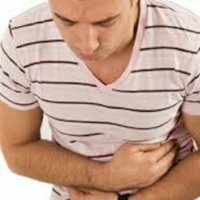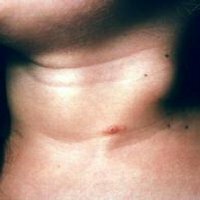HIV prevention and the algorithm of actions at high risk of infection
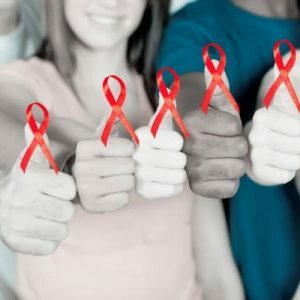
The human immunodeficiency virus is a dangerous disease that is diagnosed too often and has become epidemic in some countries.Modern medicine can diagnose HIV in time, offer supportive therapy to the patient, but it is much more reasonable to know the rules of HIV prevention in order to avoid infection.
Table of contents: General rules for HIV prevention Post-exposure prevention of HIV High risks of HIV infection - what to do in the context of preventionGeneral rules for HIV prevention
Most likely, many people know the general rules for preventing HIV infection, if not for everyone.And yet, it is not superfluous to remind them - they play a major role in noting the risk of infection with the human immunodeficiency virus to zero. These preventive measures include:
- Sexual contacts should only be carried out using a condom.Even if partners decide to live together, but before that they had sex, a condom should become a habitual addition to sex.Of course, in the case of passing the tests and obtaining a negative result, this prevention rule can be ignored, but only if there is a clear confidence in the partner's faithfulness.
Please note: requires special lubricants for sexual contact only on a water basis, because those that are made on the basis of medical Vaseline can lead to the destruction of latex and the condom will not protect against infection.
- Injecting addicts should abandon the addiction.But this is the ideal solution to the problem, which, alas, almost never turns out to be realized.Therefore, this category of people in the prevention of HIV should only use disposable syringes and needles.
- If the parents are HIV-positive( or one of the spouses has the human immunodeficiency virus), then the pregnancy is possible - this process should be accompanied by an advance examination of both men and women, by monitoring the health of the future mother and fetus by experienced doctors.Often, HIV-positive spouses choose in vitro fertilization or sperm purification in order to give birth to a healthy child.Prevention of HIV with a high probability of transmission from mother to child is also in the intake of specific drugs throughout the period of gestation, the refusal of breastfeeding of the already born baby.
- When carrying out medical procedures, workers should use disposable tools, gloves and sterilize the entire instrument with modern methods.
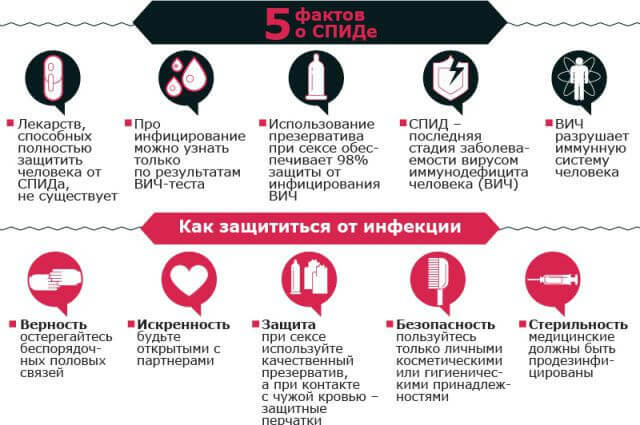
Postexposure HIV prevention
This term refers to a number of measures that need to be taken when a situation arises with a high possibility of infection with the human immunodeficiency virus. Postexposure prophylaxis should begin within 24-36 hours after a risky situation, a possible maximum of 72 hours. Within the framework of this prophylaxis, it is necessary to take certain medicines for 30 days to stop the development of HIV.
Some features of post-exposure HIV prevention:
- Drugs for postexposure prophylaxis of human immunodeficiency virus do not enter into free sale - they should be prescribed by a specialist.
-
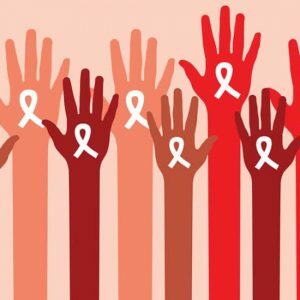 Until 2005, this type of prevention was used only at a professional risk of HIV infection, but at the moment certain medications are prescribed for a torn condom, unprotected sex, and other cases.
Until 2005, this type of prevention was used only at a professional risk of HIV infection, but at the moment certain medications are prescribed for a torn condom, unprotected sex, and other cases. - There is no evidence that postexposure prophylaxis has a 100% effect, but the risk of developing this viral disease can be reduced by 70-75%.That is, experts say that such a method of HIV prevention is appropriate.
- This method of HIV prevention is not some kind of immediate rescue from infection, an emergency - drugs will need to be taken within a month, and often the doctor prescribes to take 2-4 different medications.
- Drugs used in post-exposure prophylaxis of HIV have a number of side effects - many health professionals refuse prevention precisely for this reason.
Possible side effects from taking medications in postexposure HIV prevention:
- intense headaches;
- disorders of the digestive system - nausea and vomiting, appearing for no apparent reason;
- a constant feeling of fatigue.
Drugs used for postexposure HIV prevention:
- Isentress( raltegravir) - 400 mg twice daily;
- Viread( tenofovir) - 300 mg once a day;
- Emtriva( emtricitabine) - 200 mg per day.
These medications are taken at the same time, the doctor will choose an individual combination.
Please note: -prescribed medications in the context of postexposure prophylaxis of human immunodeficiency virus should be taken for 30 days without interruption and dosage reduction.Otherwise, the desired effect will not be given.

High risks of HIV infection - what to do in the context of prevention
Unexpected situations can happen to everyone - someone accidentally stepped on a syringe stained in the blood that was lying on the street or in the entrance, there was an unplanned sexual intercourseIncluding violence).And many more frighten direct communication with an HIV-positive person, using with him one dish, one toilet.In general, such situations are many - reacting to each of them with panic and depression is stupid, you just need to have reliable information.
If you step on a dirty syringe
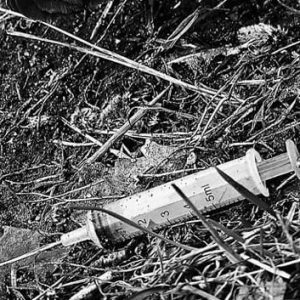 This situation can, in principle, not bother a person.The fact is that in the external environment the human immunodeficiency virus is not capable of survival - it dies quickly enough.But there is always the risk of contracting other complex infectious diseases, so doctors recommend that after 6 weeks they take a primary HIV test and then repeat the examination 3 months after the eventual infection.
This situation can, in principle, not bother a person.The fact is that in the external environment the human immunodeficiency virus is not capable of survival - it dies quickly enough.But there is always the risk of contracting other complex infectious diseases, so doctors recommend that after 6 weeks they take a primary HIV test and then repeat the examination 3 months after the eventual infection.
Note: no methods of cleaning the injection site in this case are appropriate.Many begin to impose some pulling bandages, to wash the wound with disinfectants - all this will only save you from the inflammatory process, but will not help to protect yourself from viral infections.
If there is an unprotected sexual intercourse
 This is, of course, about casual sexual intercourse and violence.In this case, it is necessary to visit a physician-infectiologist - he will prescribe medications within the framework of post-exposure prophylaxis.Remember that all the appointments of a specialist need to be performed accurately and without self-adjustment.
This is, of course, about casual sexual intercourse and violence.In this case, it is necessary to visit a physician-infectiologist - he will prescribe medications within the framework of post-exposure prophylaxis.Remember that all the appointments of a specialist need to be performed accurately and without self-adjustment.
It is necessary to pass an ELISA test 6 weeks after unprotected intercourse.And even if he gave a negative result, it is recommended to undergo a secondary examination 3 months after the eventual infection.
Note: should be consulted after unprotected intercourse within 48 hours - only in this case post-exposure prophylaxis will be advisable.
If you have to live in the same space with an HIV-positive person
You do not have to worry about this at all!Medicine knows for sure that human immunodeficiency virus is not transmitted through household items, dishes, bedding and underwear, personal hygiene items( bast, soap, toilet paper and so on).The fact is that HIV is transmitted only by direct contact of biological materials of a sick person with a healthy one.
Of course, you need to observe some caution - for example, if the skin has an open wound, then you must prevent any biological materials from getting into the HIV-positive person.
If the anxiety remains, it is recommended as a preventive measure to simply take blood tests for HIV every 3 months.
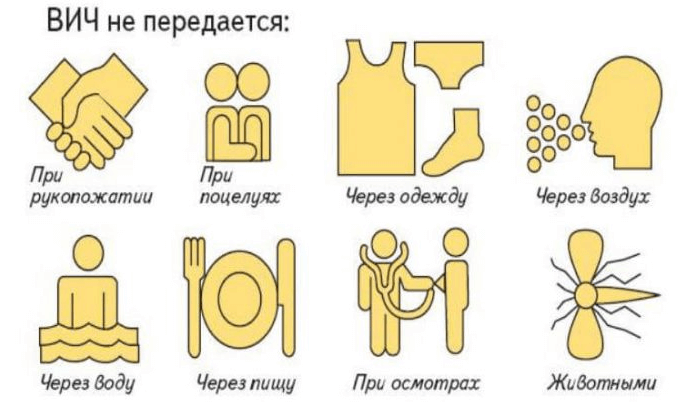
If there was a kiss with an HIV-positive person
There is a lot written about the fact that HIV is not transmitted through kisses.Many people start to doubt this and argue their position by the fact that in the presence of wounds and abrasions on the oral mucosa, two partners( both healthy and HIV infected) or caries can transmit the human immunodeficiency virus.Doctors also argue that such an option is only if two people kiss with open bleeding wounds, and the kisses themselves will be long deep.In addition, in an infected person the level of the virus must be in the blood simply beyond the limits.
Conclusion: Kisses with an HIV-positive person do not pose any danger, the disease in this case is not transmitted.
Bathing in swimming pools and open water bodies
 Let them have 50 people with an immunodeficiency virus and only one healthy - no infection!The fact that HIV quickly dies in the water, so that even small wounds on the skin of an infected person will not lead to infection of others.
Let them have 50 people with an immunodeficiency virus and only one healthy - no infection!The fact that HIV quickly dies in the water, so that even small wounds on the skin of an infected person will not lead to infection of others.
Do not forget that an unprotected sexual intercourse with an HIV-positive partner in the water is a dangerous situation - it will be necessary to conduct post-exposure prophylaxis.
The human immunodeficiency virus is a dangerous disease that requires close attention from both people and health professionals.Modern medicine can offer preventative measures - in most cases they help even in situations that are potentially dangerous in terms of HIV infection.It is enough only to have information and to seek medical help on time.
But also to panic, become suspicious and be wary of any incidents is not worth it.Manicure / pedicure can be done in any beauty salon - HIV is not transmitted through sterile instruments, and treatments conducted by masters are enough to prevent infection.Doctors say that it is almost unrealistic to become infected with the human immunodeficiency virus in everyday life, and this requires a lot of effort - HIV does not survive in the environment.But reasonable caution must be present - drug addiction, promiscuous sexual intercourse should be excluded from life.
Tsygankova Yana Aleksandrovna, medical reviewer, therapist of the highest qualification category


